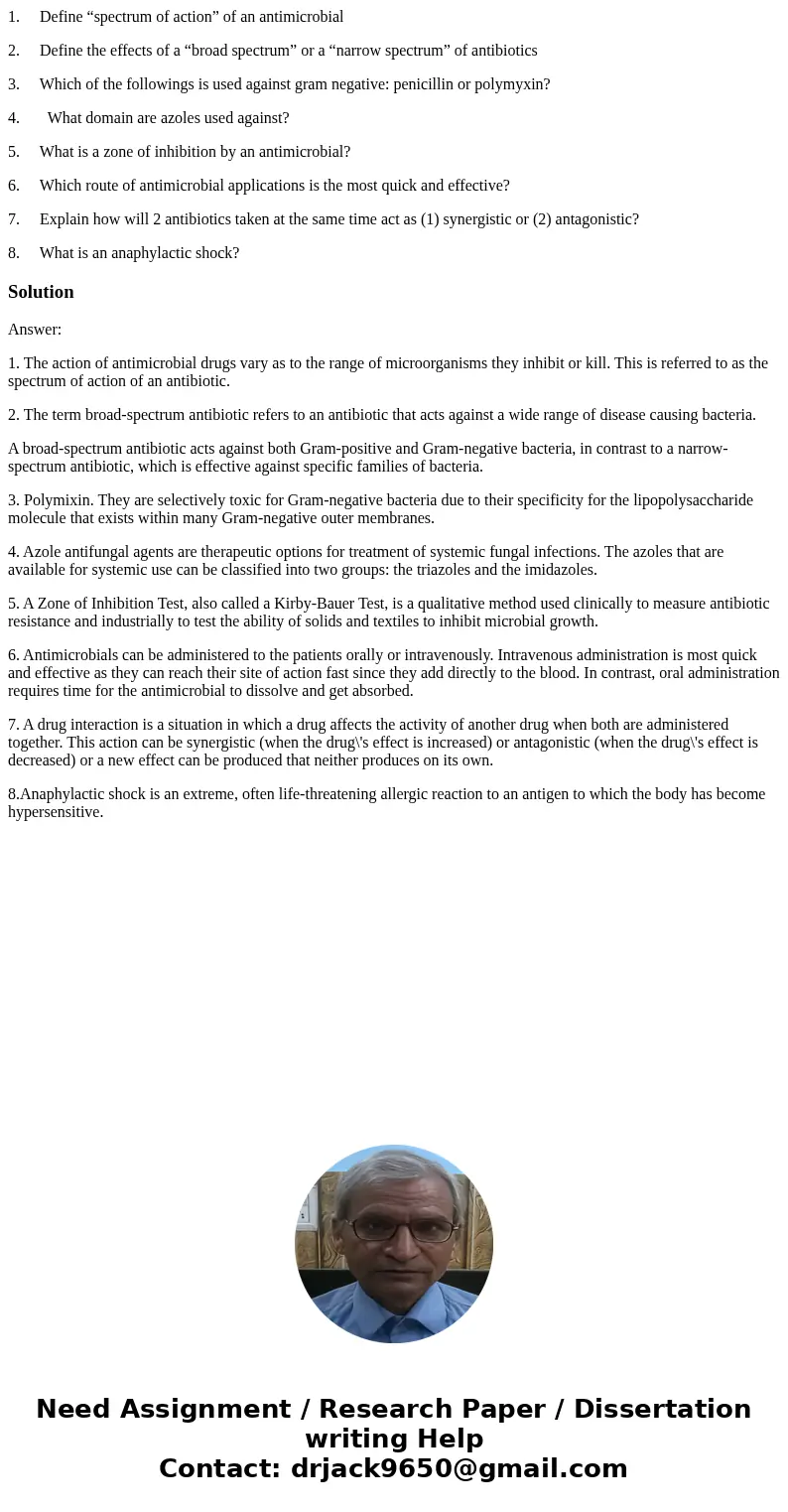1 Define spectrum of action of an antimicrobial 2 Define the
1. Define “spectrum of action” of an antimicrobial
2. Define the effects of a “broad spectrum” or a “narrow spectrum” of antibiotics
3. Which of the followings is used against gram negative: penicillin or polymyxin?
4. What domain are azoles used against?
5. What is a zone of inhibition by an antimicrobial?
6. Which route of antimicrobial applications is the most quick and effective?
7. Explain how will 2 antibiotics taken at the same time act as (1) synergistic or (2) antagonistic?
8. What is an anaphylactic shock?
Solution
Answer:
1. The action of antimicrobial drugs vary as to the range of microorganisms they inhibit or kill. This is referred to as the spectrum of action of an antibiotic.
2. The term broad-spectrum antibiotic refers to an antibiotic that acts against a wide range of disease causing bacteria.
A broad-spectrum antibiotic acts against both Gram-positive and Gram-negative bacteria, in contrast to a narrow-spectrum antibiotic, which is effective against specific families of bacteria.
3. Polymixin. They are selectively toxic for Gram-negative bacteria due to their specificity for the lipopolysaccharide molecule that exists within many Gram-negative outer membranes.
4. Azole antifungal agents are therapeutic options for treatment of systemic fungal infections. The azoles that are available for systemic use can be classified into two groups: the triazoles and the imidazoles.
5. A Zone of Inhibition Test, also called a Kirby-Bauer Test, is a qualitative method used clinically to measure antibiotic resistance and industrially to test the ability of solids and textiles to inhibit microbial growth.
6. Antimicrobials can be administered to the patients orally or intravenously. Intravenous administration is most quick and effective as they can reach their site of action fast since they add directly to the blood. In contrast, oral administration requires time for the antimicrobial to dissolve and get absorbed.
7. A drug interaction is a situation in which a drug affects the activity of another drug when both are administered together. This action can be synergistic (when the drug\'s effect is increased) or antagonistic (when the drug\'s effect is decreased) or a new effect can be produced that neither produces on its own.
8.Anaphylactic shock is an extreme, often life-threatening allergic reaction to an antigen to which the body has become hypersensitive.

 Homework Sourse
Homework Sourse